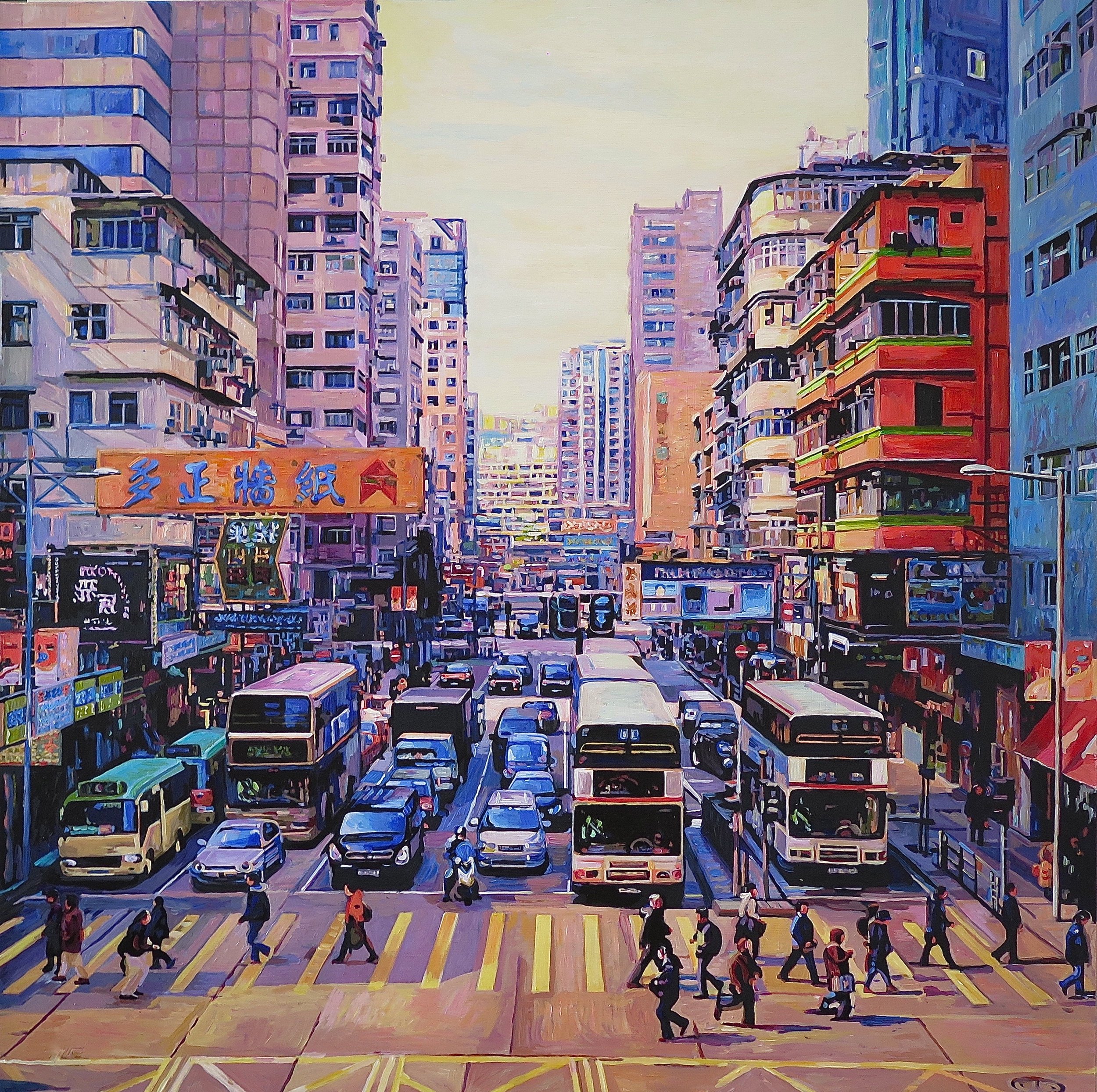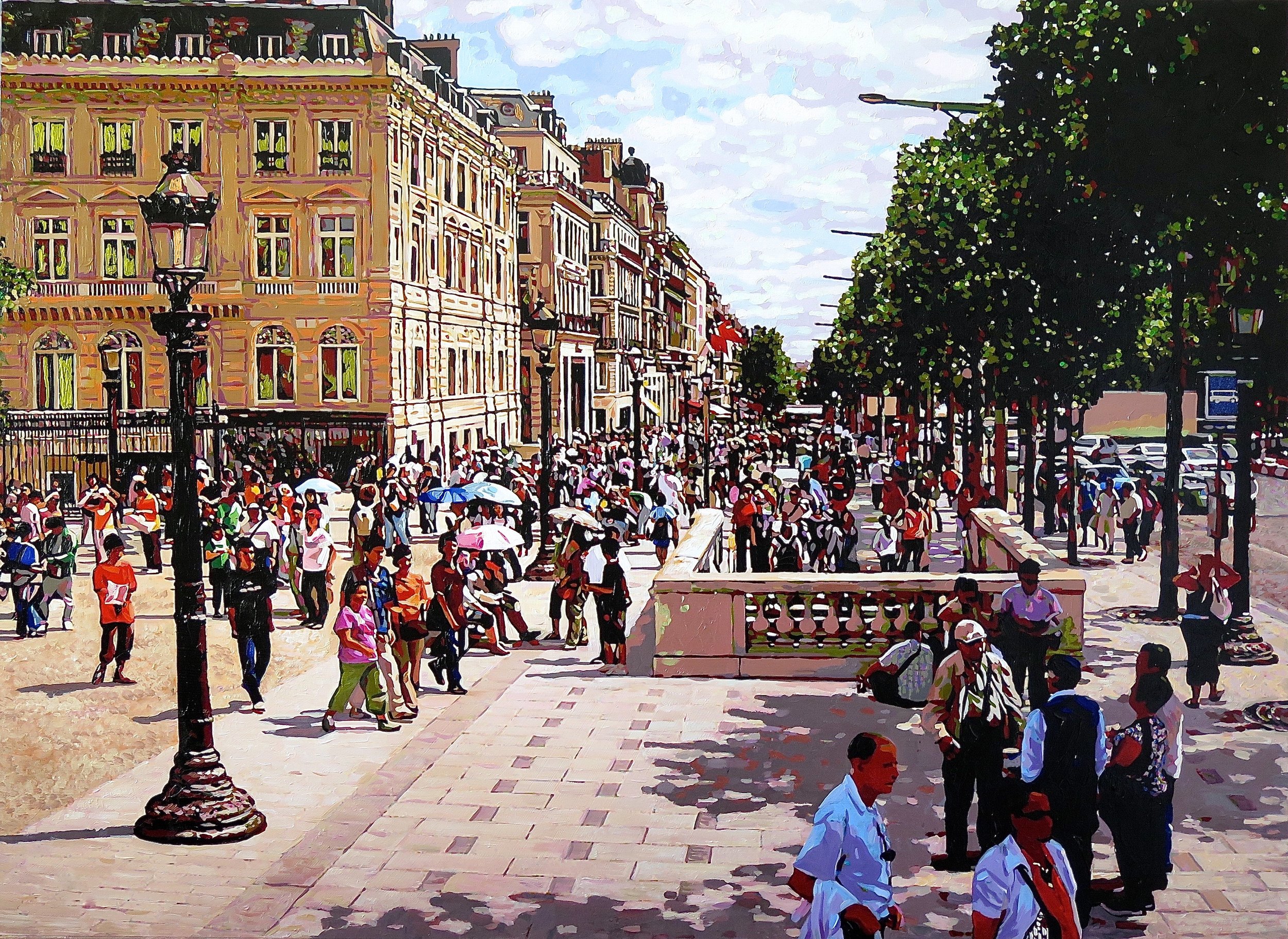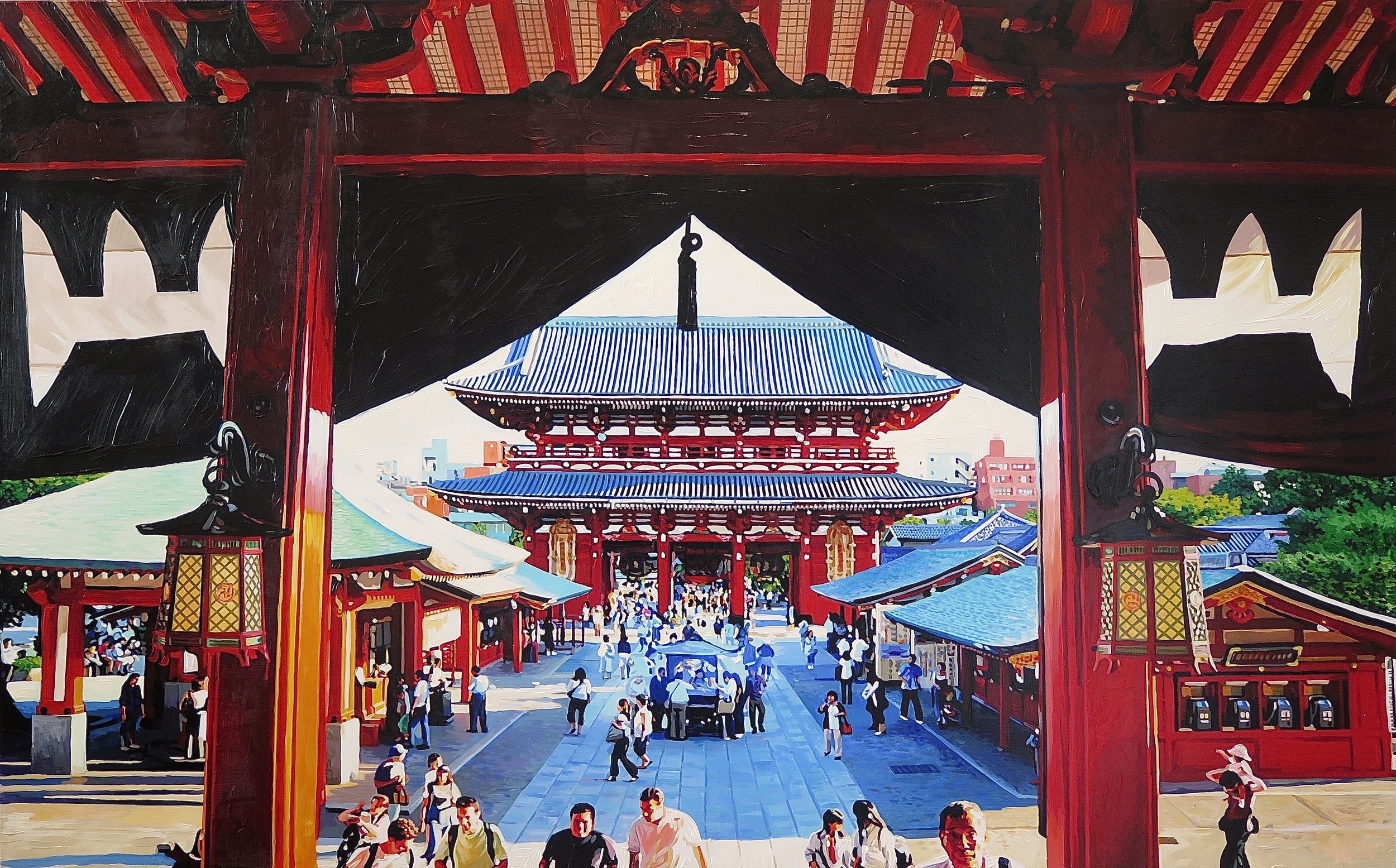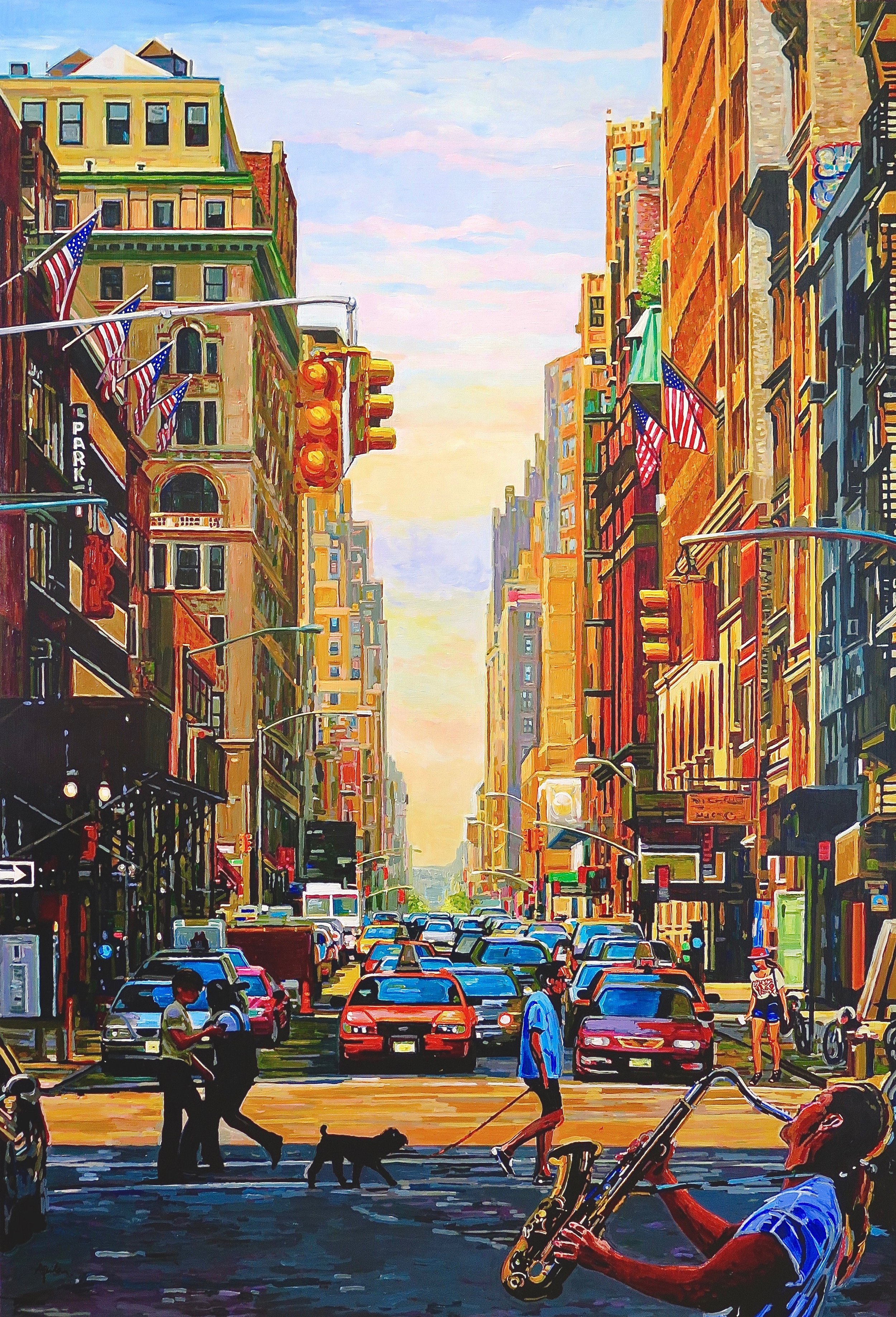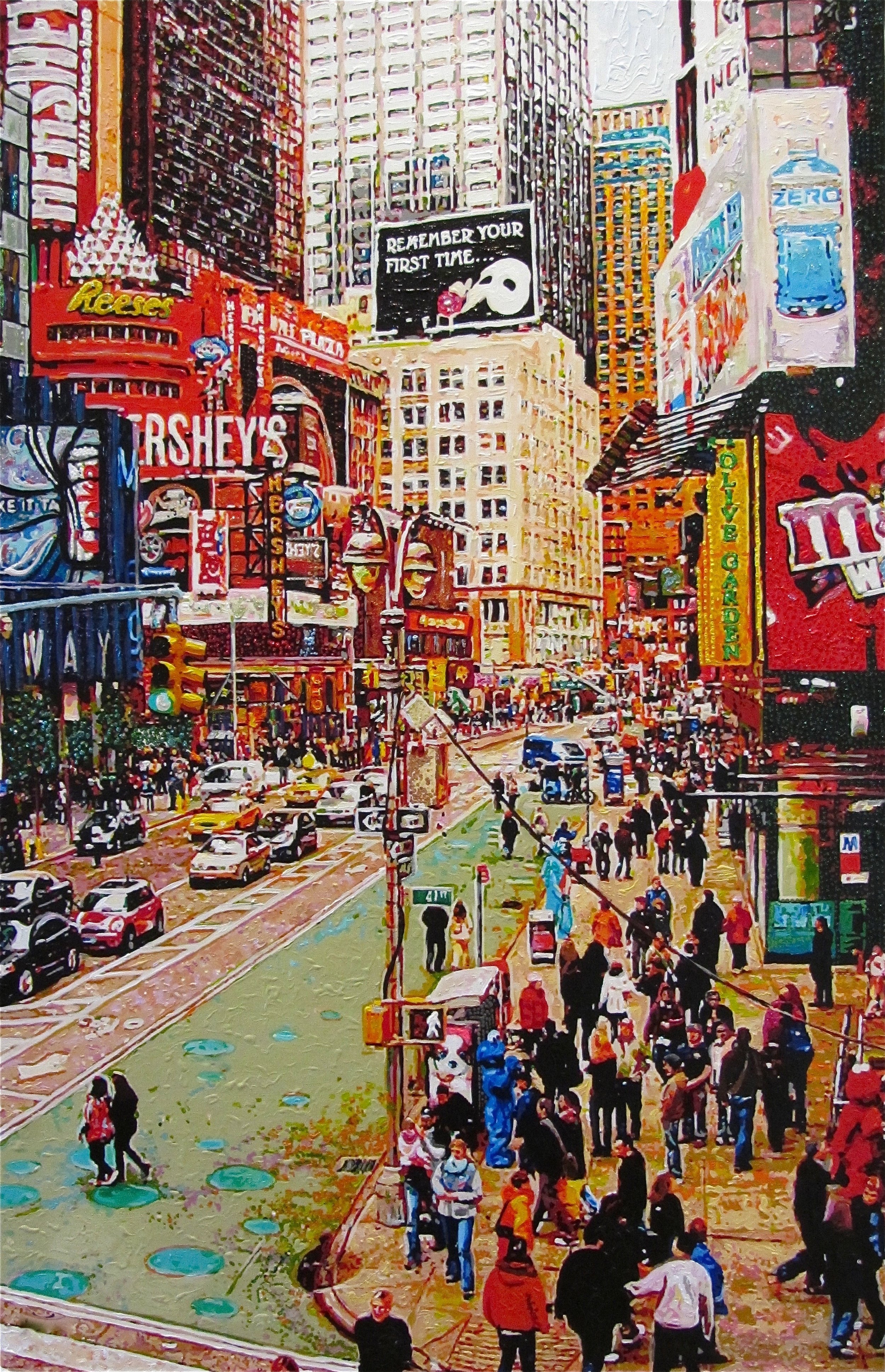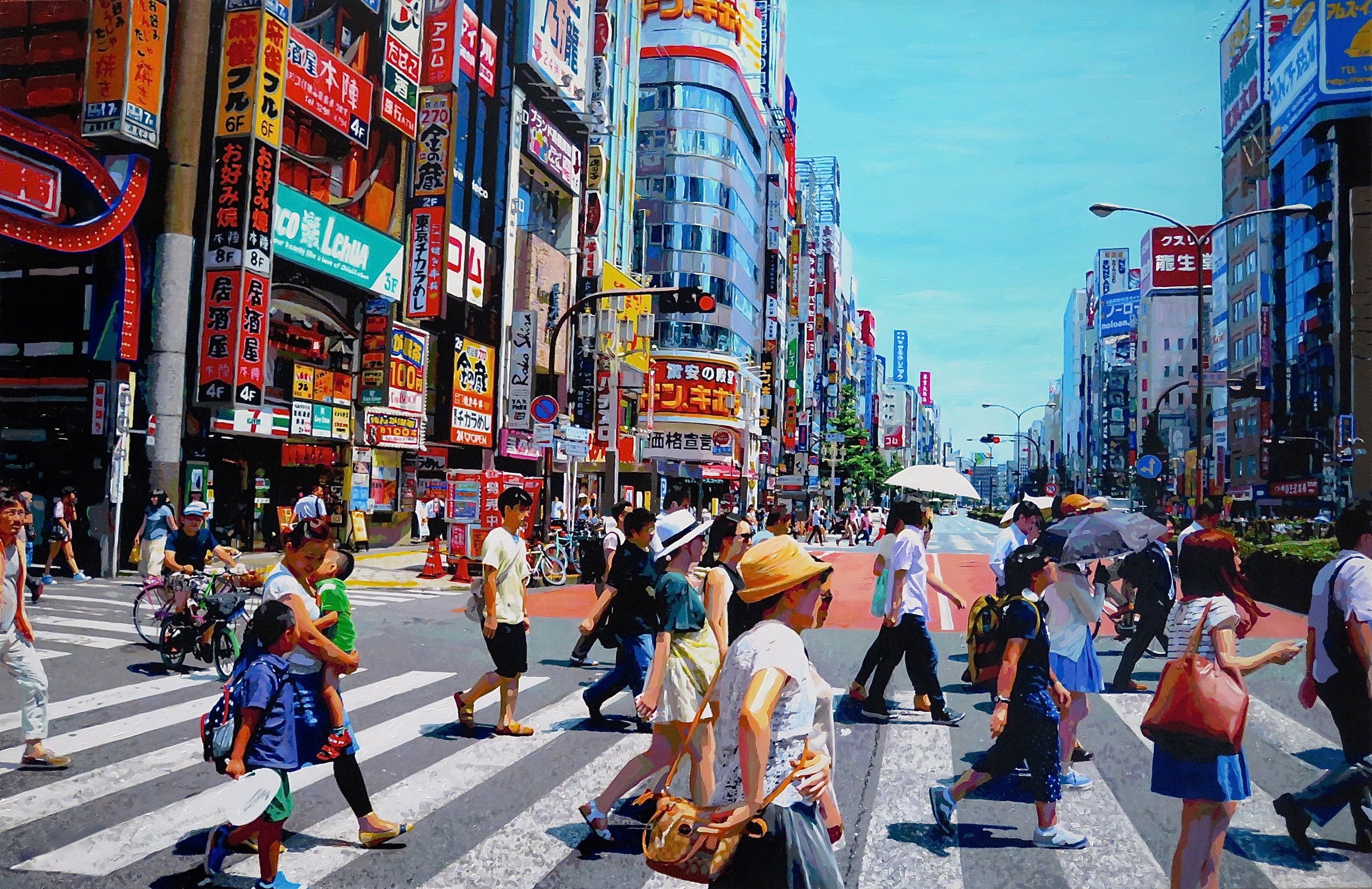TOGETHER APART
What immediately strikes in Lynda Aguilar compositions are the explosive and saturated colors that mingle amidst the interplay of shadows and piercing light amidst the skyscrapers. It's the bustle of the city one sees, the hum of trucks and taxis one hears; it's also the crowd and the vitality emanating from a city made of concrete and asphalt that equally attracts and repels us. There's also that unique lifestyle specific to New York, with its street vendors, the alternation between modern and "old-school" signs lining the main avenues, and the multi-talented artists performing to delight tourists while the jaded yet hurried locals traverse the city.
The "street life" becomes a subject for the artist, spending hours wandering the streets of these immense metropolises to feel their pulse, understand what makes them thrive, and at what rhythm. No translation would be faithful enough to communicate both the active and frenetic life of the "street life" and the constant animation and stimuli, the excitement that reigns there, the chance to believe that in that specific place, anything is possible: fame, success, and hope. One can dream that in these urban slices of life, trends are born at the corner of an ordinary street, trends that will circulate on a grand scale worldwide and, for the duration of a viral hashtag, affirm the hegemony of the metropolis in terms of influence over the rest of the world.
Lynda Aguilar pays particular attention to details, bringing them to life with the material she adds in small touches that emphasize the texture. This technique allows her to render impersonal scenes warmer and conducive to contemplation.
Through a grazing light, the artist creates ambiguity regarding the represented moment: is it the beginning of the day or the end of the afternoon? Time seems frozen to better allow everyone to soak in the captured moment, even to imagine integrating into that universe. This ambiguity primarily stems from the technique that combines photography with painting, which has become the artist's specialty. A photo taken at night can be entirely revisited through the stroke of a brush and transform into a daytime scene. The work on light becomes crucial: every window ledge of a building, every brick, every reflection is repainted without, however, concealing the initial photograph to create an ambiguous chiaroscuro effect. In Lyn’S overall body of work, time seems to stand still, the light always remains present but undecided regarding the moment it represents. When working on light, the artist thus interprets, in her way and with her technique, the transition from natural daylight to artificial night light.
The omnipresent architecture in the artist's work serves as a framework to express her message. It plunges us into the heart of the city and its anonymous crowds; the perspective guides us through the flow of cars and characters. Individuals traverse the streets, each lost in their thoughts, side by side, circulating in their city, participating in their daily routine that projects and conglomerates them into a concentrated crowd along the city's main arteries. The artist's landmarks always remain the same: the light, the low-angle view presenting an architectural facet stretching along the streets and revealing the omnipresence of signs that catch the attention of passersby, and finally, the movement instilled by the sometimes aimless and unpatterned crowd and by taxis and various vehicles filling the voids that a metropolis could not bear.
Walking in a bustling city with constant demands might initially seem tiring, exhausting, or even risky. However, upon closer inspection, from the heart of these great cities, Lynda discovers moments of cohesion, where the crowd of anonymous people becomes an imperturbable whole, becoming part of the landscape akin to yellow taxis, neon signs, or street vendors in New York, for example. The artist suggests the idea that everyone, in their vulnerability within a city teeming with dangers, accepts proximity to feel part of a whole that transcends and carries us beyond our differences. Each person draws closer to others when crossing a major city artery, hoping to rely on the vigilance of others and their ability to react if danger arises. Harmony among people becomes necessary for their survival in the megalopolises.
Lynda likes to remind us that coexistence settles in the most mundane aspects of daily life, such as this crowd caught in its daily routine. This is the strength of coexistence: living side by side to the point of becoming the emblem of the city. Without this crowd, the city ceases to exist. But with it, an essence emerges that connects individuals. It is up to them to choose what will become of it, a source of peace or conflict. Harmony and coexistence are recurring elements in the artist's work and offer landmarks that speak to everyone: it's recognizing the signature of our society, the representation of an era that is our own. In front of her pictorial captures of urban scenes, one sometimes finds oneself smiling, almost tenderly, as if facing a photograph from which numerous memories emanate.


